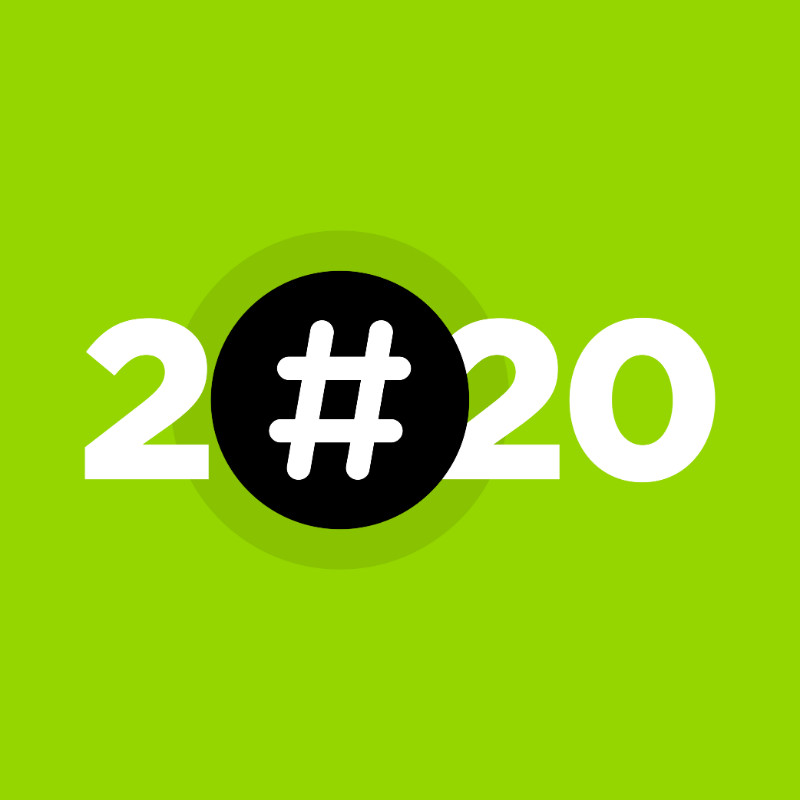
If your small business is active on social media, you need to be hashtag fluent. In the right hands, hashtags can help your small business reach a much larger share of local customers. But in the wrong hands, hashtags can be easily abused, with cringe-worthy results.
While hashtags are easy to misuse, they’re not that difficult to master. With a little work, you can tag your way to a much stronger presence on social media and build more local awareness for your business in 2020.
Types of Hashtags
On a basic level, hashtags tend to fit into three general categories. Different types of hashtags work better for different types of posts, so many sure you choose the right tag in each instance.
- Branded Hashtags. These are hashtags specific to your brand, such as your name, your tagline, a campaign tagline, or the name of a product/service. They can be used to encourage customer interactions or raise awareness.
- Trending Hashtags. These are hashtags for trending topics, which tend to be generated by current events or viral content. They can be a good way to gain visibility, but only if you can post high-quality, relevant content.
- Content Hashtags. These are hashtags that add information to the post (e.g., “Join us at #UnionSquare for #FreeSamples”) or recontextualize other parts of the post (e.g., “#FeelingBlue? Kickstart your painting project with a free color consultation”).
Guidelines for Different Platforms
In addition to different types of hashtags, you’ll need to be thoughtful about how you use hashtags on different social networks. Here’s a quick look at hashtag best practices for four popular networks.
- Facebook. While Facebook supports hashtags, they aren’t widely used or especially effective. Use hashtags sparingly in your Facebook posts.
- Instagram. Hashtags are a crucial feature of Instagram marketing. Aim for 5-15 hashtags per post. Tip: Instead of adding all of your hashtags to your original post include some in comments.
- Pinterest. Smart hashtag usage can increase your visibility in Pinterest search. The network will display your first four hashtags, so include between 4-10 per image.
- Twitter. Twitter’s the network where hashtags first took off. But with Twitter’s character limit you’ll want to limit yourself to one or two hashtags per post (or none at all).
Hashtags for Local Social Media
The hashtag strategies that work for national brands aren’t always a good fit for local businesses. Here are a few smart ways that local businesses use hashtags on social media.
- Local Trends. When hashtags trend locally, they appear in the feeds of users from that area, but not in the feeds of other users. Since a pool of local users is smaller than a national or global one, it is easier for local businesses to stand out with locally trending hashtags. You can use hashtags to cheer on local sports teams, announce local events, or encourage donations to local non-profits.
- Niche Hashtags. Local businesses should be wary of mega-popular hashtags. Instead, you should target niche hashtags that are relevant to your business. This will make your content more visible to the right kind of people, which boosts your chances of engagement. Try using a free tool like Hashtagify to identify the best hashtags for your business.
- Social SEO. 65% of shoppers perform online research before they visit physical stores. Much of that research occurs on social media, where hashtags can give your business a boost in search results. On hashtag-friendly platforms like Instagram and Pinterest, you can tag posts with the name of your city/town and products/services to increase visibility (e.g., “Get a #CouplesMassage in #Topeka”).
- Franchise Tags. If you’re the owner of a franchise location, branded hashtags can be tricky. If you simply echo your franchisor’s hashtags, you won’t stand out. To create a branded hashtag for your franchise, see if you can find a catchy way to combine your brand or your core product/service offering with your street address, neighborhood, or city.
- Have Fun! Social media gives you the chance to forge more personal connections with your customers. So don’t be afraid to have fun with hashtags. Your #ThrowbackThursday post might not rack up hundreds of likes, but it will help your customers see a more personal side of your business.
General Tips & Guidelines
To wrap things up, here are three general guidelines to help you incorporate hashtags well and avoid embarrassing situations.
- Think Before You Tag. A number of businesses find themselves in hot water when they unthinkingly use risqué or offensive hashtags. Even if you’re using what you think is an original idea for a hashtag, make sure that it doesn’t have an unintended meaning.
- Don’t Go Overboard. Cluttering your posts with hashtags not only makes them difficult to read, but it’s also considered a social media faux-pas. So reel in your inner graffiti artist and go easy on those tags.
- Tag Naturally. When using hashtags, it’s tempting to adopt popular slang or reference current trends. This is a smart strategy, but only if you can use these terms naturally. When businesses try to use slang or make references they don’t know, the results stick out like a sore thumb.


